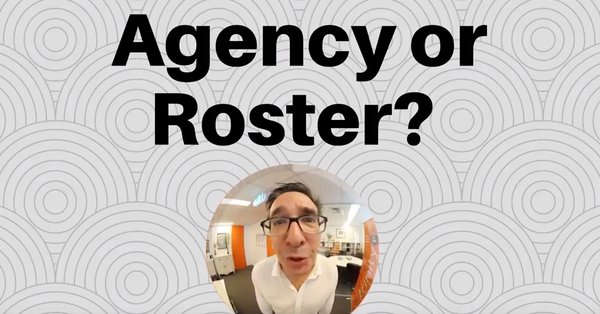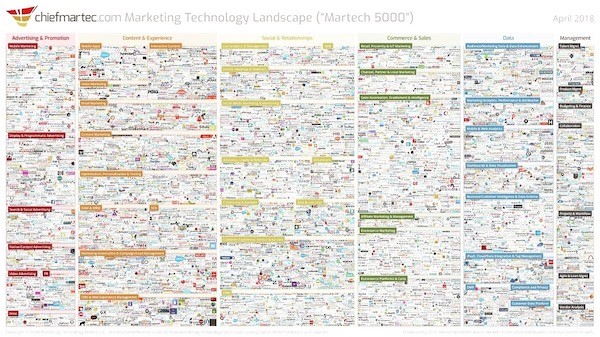This is the next in a series of one-minute videos that address one of the many complex challenges facing marketing, media and advertising today. The Golden Minute series is an attempt to prove Albert Einstein right when he said “The definition of genius is taking the complex and making it simple”.
But he also said “Everything should be made as simple as possible, but not simpler”. So we will leave it for you to judge. Please let us know here if there is a topic you would like us to cover in a Golden Minute.
Are you thinking of pitching your agency to fix an agency roster problem? Or do you really need to fix your roster? As the market changes, your marketing strategy will change. As your marketing strategy changes, your requirements for specific capabilities and skill will change.
But does this mean you need to change agencies, or perhaps change your complete roster or agency ‘eco-system’ of suppliers?
It is rarely as simple as changing an agency
It is increasingly common to hear from advertisers who have gone through a major agency tender process, and once the honeymoon period is over, they find themselves facing the same problem they had before, which is the agency is not delivering what they need.
The fact is that it may not be the agency per se, but the way you have them working in your roster of agencies.
Of course advertisers who have bought into ‘horizontality’ or the One (as in one stop shop) will believe they do not face this problem. But the reality is that all that has happened is the problem is now hidden behind the holding company walls and the client is paying for the problem.
What is the problem? As marketers needs and expectations have changed, along with their marketing strategies and budgets, agencies and in fact the rosters of agencies they work with have failed to stay aligned to these changes.
Its not their fault, as often the marketers are unaware of how much their needs have changed, so how can they possibly articulate that to the various agencies they work with.
But what happens is the agency they work with most, traditionally known as the AoR (Agency of Record) is often unconsciously blamed for this failure and will find themselves up for pitch and defending their turf in a pitch to keep the business and to realign themselves to the marketers immediate needs.
Increasingly, does it have to be an agency?
Confusingly for advertisers and marketers is the fact that their choice is no longer just agencies, as depending on how far and how much their marketing has progressed along the marketing transformation arc from ‘traditional’ brand marketing to a ‘data informed, digitally enabled, customer centric and personalised world’ of marketing, the more likely they will be considering ad tech and martech vendors in the mix to deliver their workflow, customer relationship management and media automation needs.
Where there are tech vendors, you will of course find management consultants, especially growth’ consultants close by providing analysis and strategy advice on how to best achieve ‘growth’ through marketing (ironically while their colleagues are consulting to the CFO on how to reduce marketing expenditure).
Then there are the options further ‘downstream’ as the consultant speak goes, to take advantage of the economies of scale to reduce production costs by de-coupling it from the agencies and bundling it into a technology platform that will create all of your marketing collateral needs in half the time and a third of the cost of your agencies.
Yes, it is a jungle out there (6000+ vendors here and counting) and a jungle that has grown far beyond the idea of simply having a creative and media agency (remember the time these came as a package?).
Now there are as many options and combinations and variations as you could possibly image. So suddenly you realise that with all of these moving parts and options and interdependencies, it is unlikely you can solve your under-delivery of your requirements simply by changing agencies.
Do you need to change the way you look at agencies
While all of this change in marketing and technology and media and advertising is going on, agencies have also been changing to meet the changing needs of their clients. Those clients who have articulated openly and clearly their changing requirements of their agencies and changing expectations are usually met with the agency changing to satisfy those needs. (No agency wants to lose a client).
The strange part is that when we talk with agencies on their scope of capabilities and skills, the one group they often forget to tell is their existing clients. They tell their staff, they tell pitch consultants, they tell the trade press and they tell potential new clients in a pitch, but they often do not tell their existing clients.
Or if they do, they will often get an underwhelming reaction because their client does not need that capability right now, and is probably wondering to themselves as to why the agency did not work harder on getting what they currently do right before expanding the offering.
But this is why we recommend you sit down with all of your agencies, not just the AoR and the media agency, but all of them on a regular basis and ask them what skills and capabilities they can bring to the relationship.
The reason is that this changes over time and secondly when they tell you one day it may not be of interest, but a week later it could be something you need desperately. So before you swap out one agency for a new one on the roster, check to see if it already exists somewhere in your current roster of agencies and vendors.
Could you do it all yourself
The big trend is for advertisers to take in-house more of the services that agencies have traditionally offered. This includes everything from design studio to full blown production facilities and even creative and strategy.
It is also media planning and even buying and programmatic trading. It includes social media and search and more. The fact is that technology has made many of these processes more accessible, but it still requires recruiting and keeping the key personnel to make it work.
Even if you are not considering bringing any part of the agency remit in-house, it is still worth considering the options, because properly managed it definitely provides a more convenient and faster path to market and often reduces the base cost of the agency allowing agencies to focus on what they do best which is developing strategies and ideas.
Having said that, building agency services in-house is not something to be rushed into. But as part of an overall consideration of how to meet your current and future marketing needs it is definitely an option.
The fact is that few marketers have the same strategy they had ten years ago, or even five years ago. Yet the roster of agencies and vendors delivering the needs of that strategy may have changed in name but usually not in structure or process.
So next time you are thinking of changing an agency because they are not delivering your requirements, think wider and consider perhaps reviewing your roster and not just your agency, because it could be instead of going from one agency to the next, you could end up future-proofing your needs with a strategic supplier alignment.
Golden Minute Script
With all the changes in marketing these days is your marketing strategy changing?
Changes in strategy demand changes in capabilities needed.
This could be changes in marketing personnel, changes in process, even changes in agencies.
Perhaps it’s time to review your whole roster and not just the individual agencies?
An opportunity to consider the capabilities you now need
Then decide if they should be in-house or outsourced
And if outsourced, do they exist in your current roster or not
And if you should expand your roster or consolidate it
It is a prime opportunity to set yourself up for success
Because the right strategy is the first step but getting the implementation right is essential.
TrinityP3’s Strategic Supplier Alignment service helps you to untangle your supplier roster and understand its strengths and weaknesses to improve your performance. Learn more





